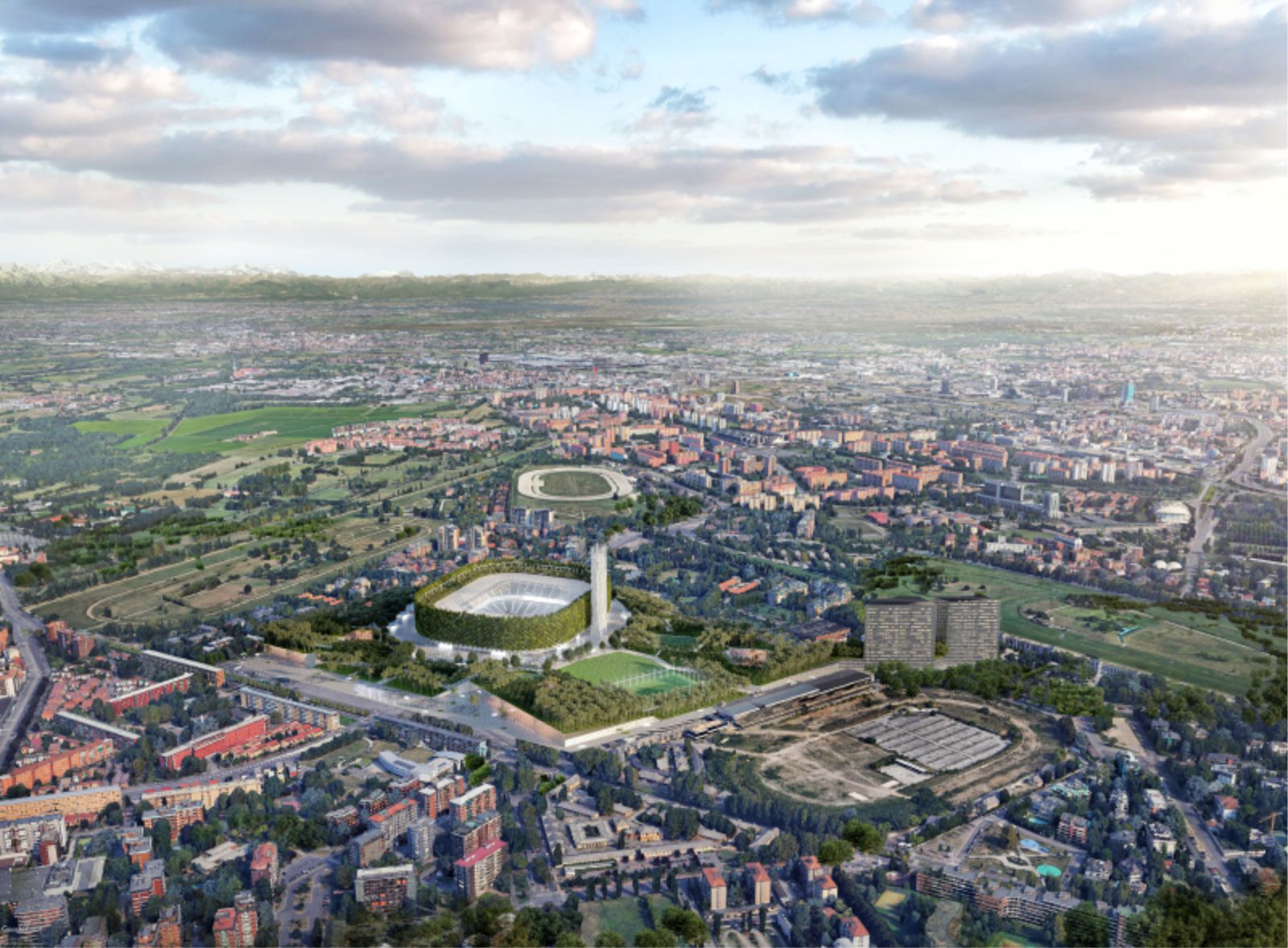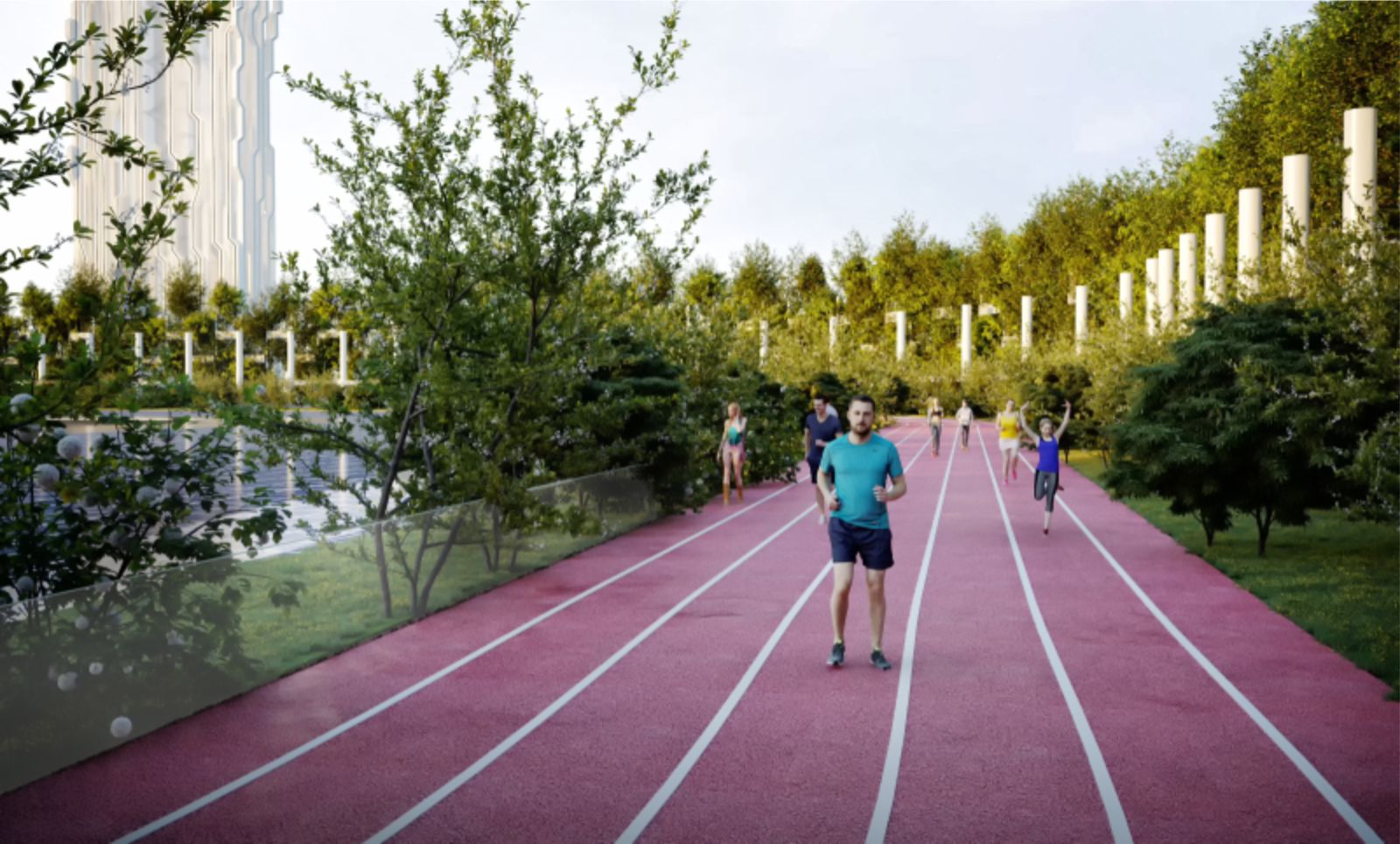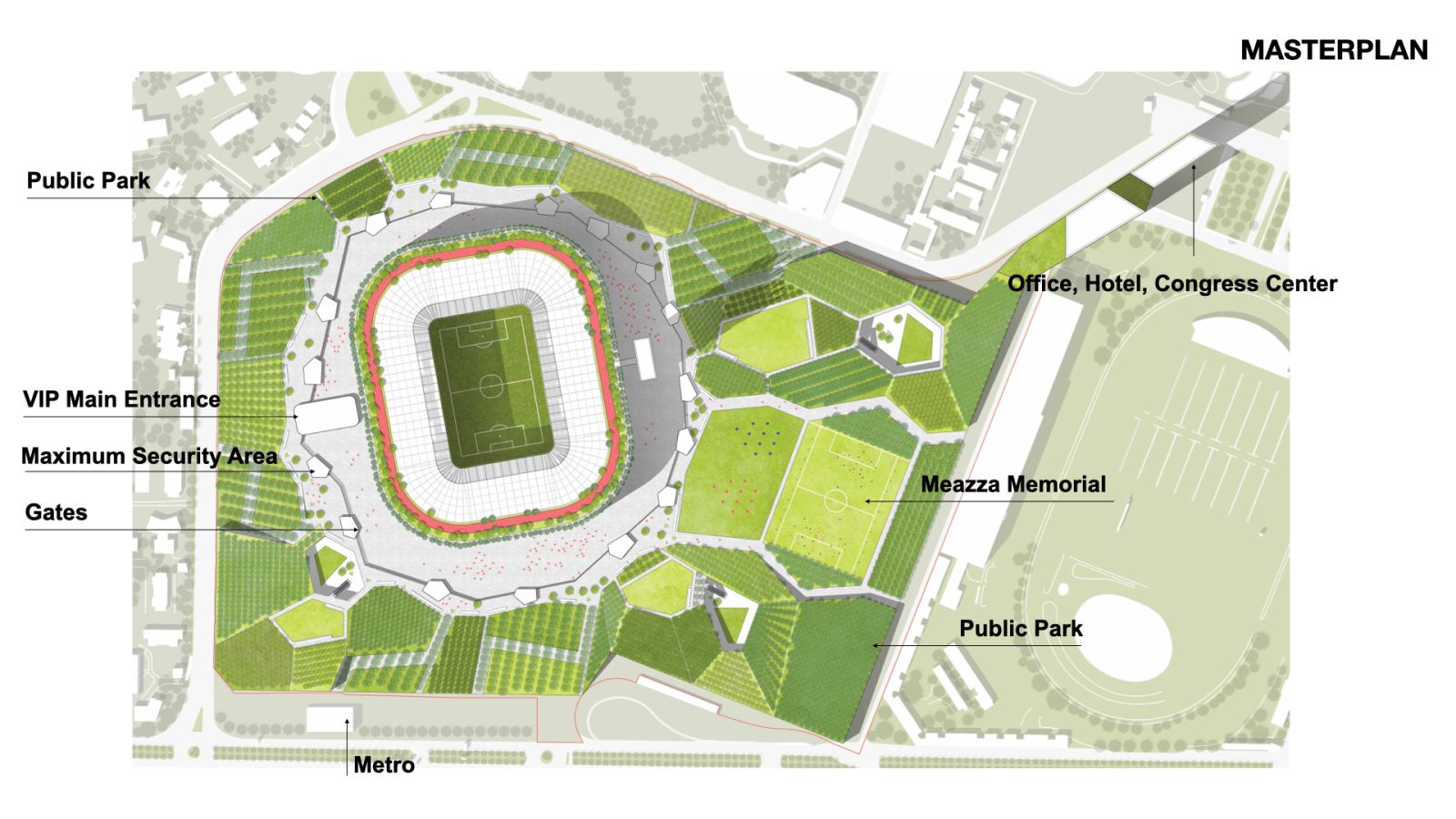The International Forest Stadium is the proposal developed by Stefano Boeri Architetti, together with a multidisciplinary team including ARUP, Fabio Novembre and Balich Wonder Studio, on the occasion of the competition announced in 2019 by the Inter and Milan teams, for the new Milan Stadium.
The project was presented to the public in 2022 in the context of the Public Debate, stands as a new landmark for the San Siro area and the city, a monument to football and its fans, right in the place made iconic by the current Meazza Stadium. From an urban planning point of view, the Stadium would rise within the extensive ‘Sport and leisure district’ system of over 800 hectares that would make the San Siro district a unique excellence in Europe.

A pivotal element of the project – and a point of innovation with respect to the competition – is the relocation of the Patroclus tunnel, which would allow the new Stadium to be built in the middle of a 4.5-hectare public urban park: this way, the new Stadium would be appropriately distanced from the residences that rise around the area, respecting their needs and guaranteeing their comfort.
The project area also includes, together with the sports facility, a series of public and semi-public services and functions (offices, hotel, conference centre, commercial spaces) aimed at enhancing the functional mix and encouraging the continuous use and enjoyment of the area. the project envisages a Forest Stadium, in which trees surround the pitch and the stands and living nature becomes the protagonist of the football experience and a new urban landscape for all citizens.

In fact, the Stadium is designed to host 5,700 square metres of horizontal green roofs, 7,000 square metres of green façades with 3,300 trees and 56,300 shrubs of 70 different species, which are expected to absorb 162 tonnes of CO2 every year. A green lung for the metropolis and a place of green connection in the urban fabric, able to help clean the air, absorb fine dust and mitigate the temperature of the neighbourhood, thanks to the vegetation’s reduction of the “heat island” effect.
The aim of the project is to reduce emissions and energy consumption: thanks to the use of large photovoltaic surfaces and a careful study of water and waste management, the Forest Stadium aims to become an energy self-sufficient and environmentally friendly arena. In terms of distribution and internal functional organisation, the flows of spectators, employees, sportspeople, visitors and VIPs are designed to be easily recognisable and accessible, yet always separate.

The stadium also integrates several attractive functions for the community (commercial areas, museum spaces, gyms, press and VIP areas, bars and restaurants): flexible hospitality spaces to make the Stadium accessible as many days as possible, for different public occasions. In particular, identifying elements of the project are the running track located on the top level, which offers all users a place to walk and train, and the Tower of Light, a luminous landmark for the Milanese teams.
With the Tower of Light, the aim is to strengthen the ‘One Stadium for Two’ model, emphasising red and blue, the colours of the two teams that have brought Milanese football to the world: a luminous landmark that is recognisable from afar and that changes colour depending on the team on the pitch – particularly iridescent on the occasion of the ‘derby della Madonnina’.

The tower houses the museum of both football clubs and, at the apex of its spires, the statues of footballers and coaches who have built the greatness of Milanese football. Inside the park surrounding the new Forest Stadium, in order not to forget the glorious history of the current Meazza Stadium, the project envisages a memorial that is always open to the public, where stories, legends, memories and emotions of an entire century are collected.
The memorial, together with the new relationship with nature and the integration of public functions, would transform the new Stadium for Milan into a building-symbol of a new way of conceiving and experiencing sports architecture in the city. Source by Stefano Boeri Architetti.

- Location: Milan, Italy
- Architect: Stefano Boeri Architetti
- Interior Design: Fabio Novembre
- Structural project, MEP, Sustainability, Bowl Design: ARUP
- Landscape Design: Michel Desvigne Paysagiste
- Agronomist: Studio Laura Gatti
- Show Design: Balich Worldwide Shows
- Year: 2022
- Images: 46xy, TOMOTOM, Courtesy of Stefano Boeri Architetti




